

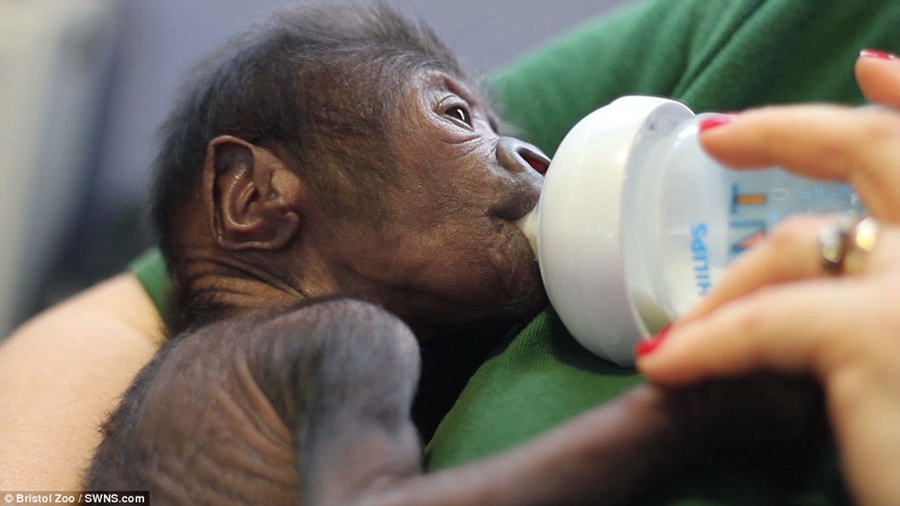
Birth: Females give birth to one infant after a pregnancy of eight and half months, only a couple of weeks shorter than a human
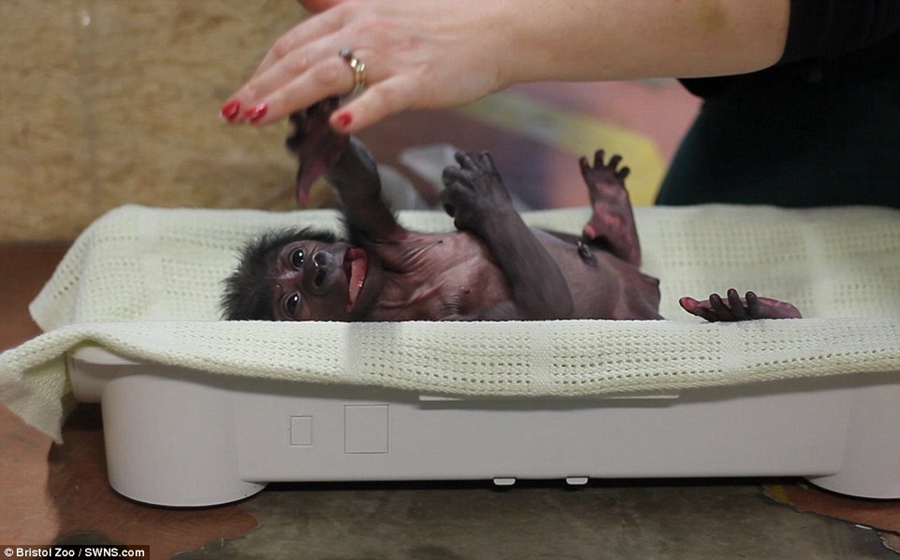
It is the first time that an infact has survived the procedure. The Western lowland gorilla is pictured shortly after the C-section
Professor Cahill was brought in after she became very poorly when she was full-term and a scan showed her baby was becoming unresponsive.
That same day Kera, who has no other children, was tranquilised in the zoo’s £1million gorilla enclosure - and carried in a hammock to the on-site clinic because she is too wide to fit on a normal stretcher.
She was then placed on the operating table, with the rope hammock still visible beneath her.
After she was given a general anaesthetic, Professor Cahill and his colleague from St Michael’s Hospital Dr Aamna Ali performed the caesarean.
They were assisted by Bristol Zoo staff vet Rowena Killick, who, when the baby had to be intubated to help her breathe independently, breathed into the tube.
The team then rubbed the baby’s chest, cleared her mouth and to everyone’s relief she took a deep breath.
Professor Cahill, who has performed hundreds of human caesarean operations, said: ‘We were invited to the zoo to assess the well-being of Kera, because she was in late pregnancy and showed some signs of being unwell.
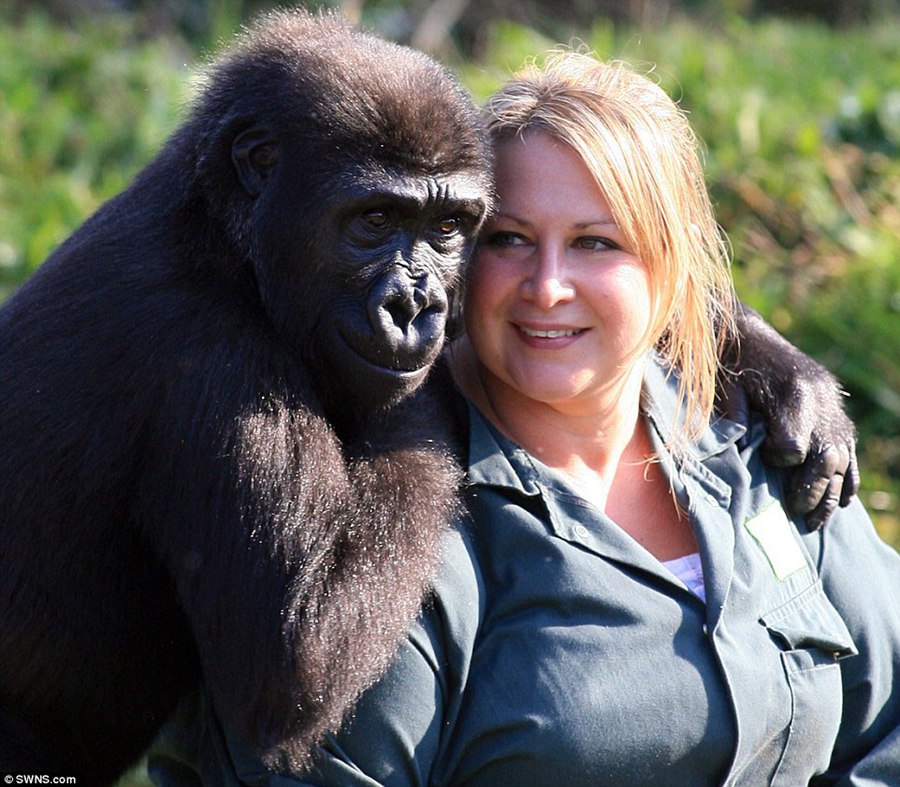
Mother: Kera the Western Lowland gorilla is pictured with keeper Mel Gage when she arrived at Bristol Zoo in 2008
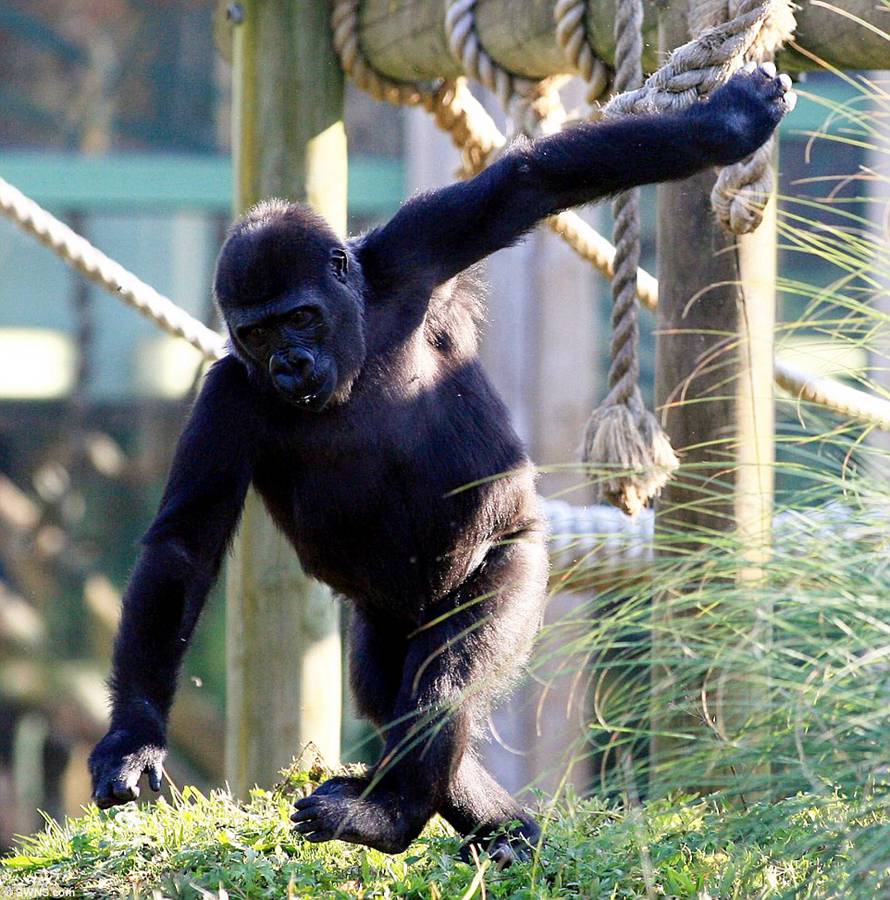
At home: Kera is a Western lowland gorilla, a critically endangered subspecies originally from Cameroon in the west Central Africa region
 |
Day|Week

 Train Attendant Recruitment Held in East China
Train Attendant Recruitment Held in East China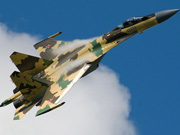 In pics: Russia's Su-35 fighter jets
In pics: Russia's Su-35 fighter jets Young monks learn kungfu in NE China temple
Young monks learn kungfu in NE China temple Scenery of Guzhu, thousand-year-old ancient village in E China
Scenery of Guzhu, thousand-year-old ancient village in E China China releases HD true color images of lunar surface
China releases HD true color images of lunar surface To-be flight attendants undergo training at snow-covered field
To-be flight attendants undergo training at snow-covered field Aerial photos taken on J-11 fighter
Aerial photos taken on J-11 fighter 'Coldest town in China' — a fairyland you don't want to miss
'Coldest town in China' — a fairyland you don't want to miss Deep love for breathtaking Hainan
Deep love for breathtaking Hainan Beautiful Chinese tennis player Wang Qiang goes viral online
Beautiful Chinese tennis player Wang Qiang goes viral online